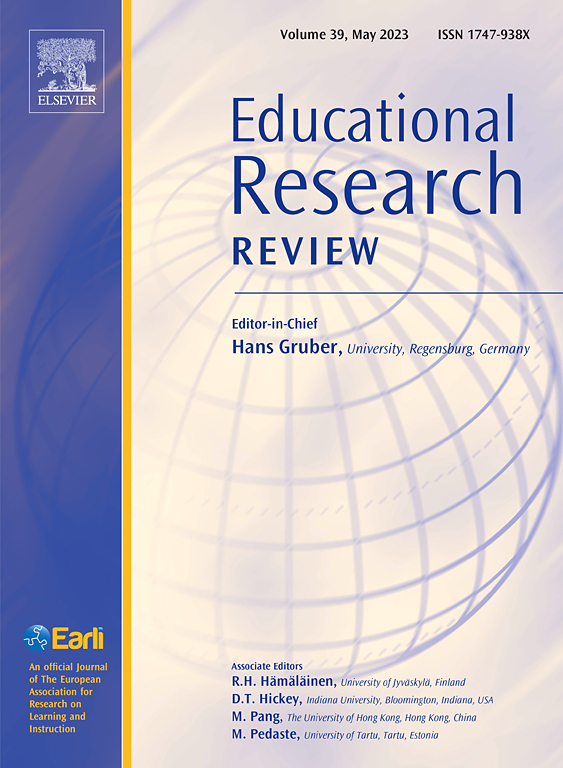Understanding the use of physical computing in K-12 education: A systematic literature review
IF 10.6
1区 教育学
Q1 EDUCATION & EDUCATIONAL RESEARCH
引用次数: 0
Abstract
Physical computing is a field that involves the use of sensors, actuators, and microcontrollers to build systems that interact with the environment. This approach has been used in education, particularly to teach computer science, programming, computational thinking, and design concepts. This systematic review explores the use of physical computing in K-12 education, with a focus on what educational interventions are like, how they are assessed, their effects, and how students experience them. We included 43 scientific studies that describe the methodology and assessment process used in the intervention. We found that physical computing interventions have three types of expected educational outcomes: to learn physical computing itself, to improve other learning outcomes, or to improve attitudinal variables. The interventions use a variety of educational methods to achieve their goals; as well as a variety of instruments to measure outcomes. A common lesson structure has emerged, widely adopted across classrooms, including a short lecture followed by a hands-on phase, usually including teamwork to foster collaboration. Further comparative and long-term studies are needed to understand how physical computing interventions affect students, especially those who are underrepresented.
理解物理计算在K-12教育中的应用:系统的文献综述
物理计算是一个涉及使用传感器、执行器和微控制器来构建与环境交互的系统的领域。这种方法已被用于教育,特别是教授计算机科学、编程、计算思维和设计概念。这篇系统综述探讨了物理计算在K-12教育中的应用,重点是什么是教育干预,它们是如何评估的,它们的影响,以及学生如何体验它们。我们纳入了43项描述干预方法和评估过程的科学研究。我们发现物理计算干预有三种类型的预期教育成果:学习物理计算本身,改善其他学习成果,或改善态度变量。干预措施使用各种教育方法来实现其目标;以及各种测量结果的工具。一种通用的课程结构已经出现,在各个教室广泛采用,包括一个简短的讲座,然后是实践阶段,通常包括团队合作,以促进合作。需要进一步的比较和长期研究来了解物理计算干预如何影响学生,特别是那些代表性不足的学生。
本文章由计算机程序翻译,如有差异,请以英文原文为准。
求助全文
约1分钟内获得全文
求助全文
来源期刊

Educational Research Review
EDUCATION & EDUCATIONAL RESEARCH-
CiteScore
19.40
自引率
0.90%
发文量
53
审稿时长
57 days
期刊介绍:
Educational Research Review is an international journal catering to researchers and diverse agencies keen on reviewing studies and theoretical papers in education at any level. The journal welcomes high-quality articles that address educational research problems through a review approach, encompassing thematic or methodological reviews and meta-analyses. With an inclusive scope, the journal does not limit itself to any specific age range and invites articles across various settings where learning and education take place, such as schools, corporate training, and both formal and informal educational environments.
 求助内容:
求助内容: 应助结果提醒方式:
应助结果提醒方式:


